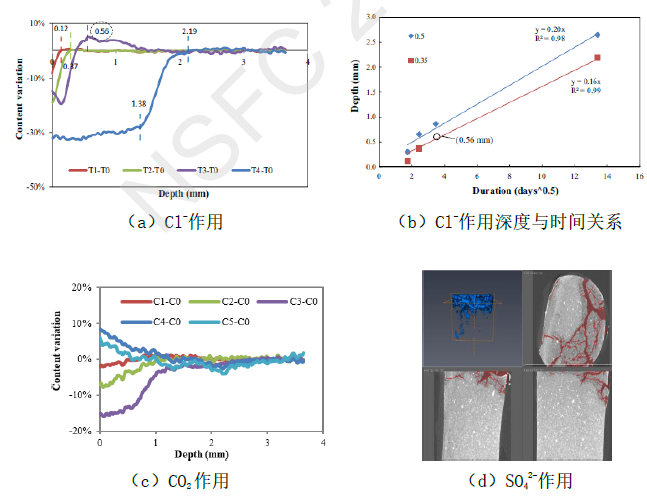Due to lack of qualified aggregates, desalinated sea sand has been broadly and massively used in manufacturing of reinforced concrete structures. During service of these structures, it is inevitable for concrete protection layer to be passively affected by environmental CO2. Meanwhile, the effects from CO2 can also be applied actively to the concretes due to carbonation curing regime applied, which usually is at a relatively high CO2 concentration and pressure. Based on multiple on site cases, it can be conducted that restriction for Cl- content in existing concrete manufacture standards about the use of raw materials cannot guarantee safety of reinforcement under the combined mechanism of CO2 and Cl-. To solve this corrosion risk raised by the combined effect from active or passive carbonation of concrete protection layer and Cl- introduced from desalinated sea sand, a series of studies will be carried out in this project. Firstly, a thorough characterization on carbonation in cementitious material with multiple types of test methods will be carried out to establish the relationship between key parameters of carbonation environment and carbonation process took place in concretes. Following with that, mechanism and key parameter of Cl- redistribution with the carbonation process will be founded. Subsequently, within the pH and Cl concentration ranges of carbonated desalinated sea sand concretes, safety scope for key parameters on reinforcement corrosion, such as critical Cl- concentration and carbonation degree, will be obtained. Finally, based on all the quantitative relationships established between the key parameters, safety margin for the raw material induced Cl-, CO2 concentration and pressure for the active carbonation curing regime that can prevent or minimize corrosion of reinforcement can be determined.

